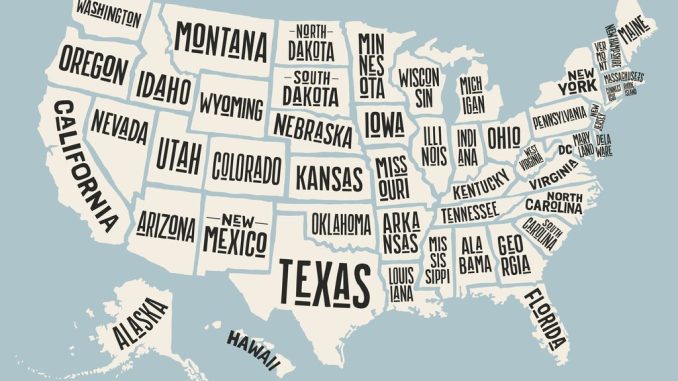
Drone Technology and Its Applications in the U.S.
Drone technology has advanced significantly in recent years, transforming industries across the United States. From aerial photography and agriculture to military defense and disaster response, drones are playing a crucial role in innovation and efficiency. This article explores the various applications of drones in the U.S., the regulations surrounding their use, and future trends shaping the industry.
1. The Evolution of Drone Technology
Drones, also known as Unmanned Aerial Vehicles (UAVs), were initially developed for military purposes but have since expanded into commercial and consumer markets. With advancements in AI, GPS, and automation, drones now offer improved flight stability, longer battery life, and enhanced data collection capabilities.
Key Advancements in Drone Technology:
- AI and Machine Learning: Drones can analyze data in real time, enabling applications like object detection and autonomous navigation.
- 5G Connectivity: Faster communication between drones and control centers allows for better coordination in logistics and emergency response.
- Swarming Technology: Multiple drones can work together autonomously, improving efficiency in military, search-and-rescue, and delivery operations.
- Longer Flight Times: Innovations in battery technology and solar-powered drones extend operational hours for surveillance and research.
2. Commercial and Industrial Applications of Drones
Aerial Photography and Videography
Drones have revolutionized the media industry by providing breathtaking aerial shots for film production, journalism, and real estate marketing. High-resolution cameras and stabilizing gimbals allow for cinematic-quality footage at a fraction of traditional helicopter costs.
Agriculture and Precision Farming
Farmers are leveraging drone technology to monitor crops, optimize irrigation, and apply pesticides more efficiently. Agricultural drones equipped with multispectral cameras can analyze plant health and detect diseases before they spread.
Benefits of Drone Use in Agriculture:
- Precision spraying reduces chemical waste.
- Thermal imaging detects water shortages in fields.
- Automated monitoring improves yield predictions.
Delivery and Logistics
Retail and logistics companies like Amazon, UPS, and FedEx are testing drone delivery systems to improve last-mile logistics. Drones can reduce delivery times and lower transportation costs, especially in rural areas.
Challenges in Drone Delivery:
- Airspace regulation compliance.
- Payload limitations.
- Public acceptance and safety concerns.
Infrastructure and Construction
Drones assist in surveying construction sites, monitoring progress, and inspecting bridges, roads, and power lines. Engineers use aerial data to identify structural weaknesses without sending workers into dangerous environments.
Emergency Response and Disaster Relief
Drones play a vital role in search-and-rescue missions, disaster response, and firefighting. Equipped with thermal imaging and GPS tracking, drones locate missing persons, assess damage, and deliver emergency supplies to inaccessible areas.
Examples of Drone Use in Emergencies:
- Hurricane Response: Drones assess storm damage to speed up insurance claims.
- Wildfire Management: Aerial thermal imaging helps firefighters track hotspots.
- Flood Mapping: UAVs provide real-time flood predictions to aid evacuation efforts.
Law Enforcement and Security
Police and security agencies use drones for crowd monitoring, surveillance, and search operations. With facial recognition and AI-driven threat detection, drones enhance public safety while reducing risks for officers.
3. Military and Defense Applications
The U.S. military has been at the forefront of drone technology, utilizing UAVs for reconnaissance, surveillance, and combat missions. Drones like the MQ-9 Reaper and RQ-4 Global Hawk provide real-time intelligence and carry out precision strikes, minimizing the need for manned operations.
Key Military Drone Uses:
- Reconnaissance: Gather intelligence in high-risk areas.
- Combat Missions: Conduct precision strikes with minimal collateral damage.
- Surveillance: Monitor borders and military zones.
The development of AI-powered autonomous drones is shaping the future of military strategy, enabling faster decision-making and improved battlefield coordination.
4. Drone Regulations in the United States
The Federal Aviation Administration (FAA) regulates drone use in the U.S. to ensure safety and privacy.
FAA Drone Rules for Commercial and Recreational Use:
- Part 107 Certification: Required for commercial drone pilots.
- No-Fly Zones: Drones cannot operate near airports, military bases, or government buildings without special permission.
- Weight Restrictions: Drones weighing over 55 lbs require special FAA approval.
- Remote ID Requirement: As of 2024, all drones must transmit identification and location data to authorities.
State and Local Regulations:
Many states have additional drone laws, such as restrictions on flying over private property or during public events. Some cities enforce drone-free zones to protect privacy and reduce noise pollution.
5. The Future of Drone Technology in the U.S.
The drone industry is expected to continue growing, driven by advancements in AI, automation, and 5G connectivity.
Future Trends in Drone Technology:
- Autonomous Drones: AI-powered UAVs will operate without human intervention, improving efficiency in deliveries, agriculture, and security.
- Urban Air Mobility (UAM): Companies like Joby Aviation and Archer are developing passenger drones (air taxis) for urban transportation.
- Advanced Drone Swarming: Military and commercial drones will work in coordinated networks, enhancing data collection and operational efficiency.
- Expanded AI Integration: AI-driven drones will improve real-time decision-making, object detection, and automated navigation.
- Environmental and Conservation Uses: Drones will assist in monitoring climate change, wildlife protection, and pollution control.
Conclusion
Drone technology is reshaping industries across the United States, enhancing efficiency in agriculture, security, construction, logistics, and military operations. As drone regulations evolve and technology advances, we can expect even greater adoption of UAVs in various sectors. Whether for commercial, governmental, or personal use, drones are poised to play a crucial role in shaping the future of automation and aerial innovation. 🚀🚁
Leave a Reply